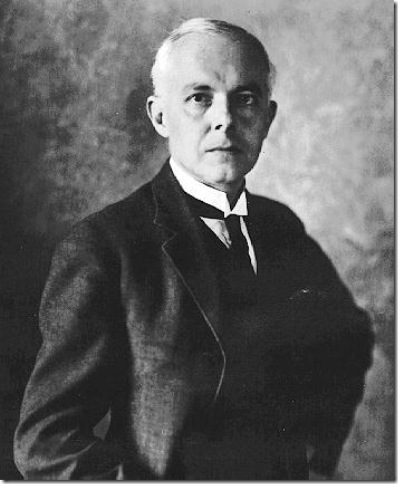When Béla Bartók went into the Austro-Hungarian countryside starting in 1906, the folksongs he brought back underlay his compositions in different ways: Some were harmonizations, tart and otherwise, of Christmas carols and the like, while in other works he drew stronger stuff from the melodies he distilled.
In a work such as Contrasts, written in 1938 for Benny Goodman, Joszef Szigeti and Bartók himself, the music of the two outer movements hearkens back to dance, while the middle recalls the “night music” that the composer liked so much to evoke in other works. If the trio is a slighter masterwork than chamber works such as the six quartets, it nevertheless remains valuable as a memorable example of this great composer’s remarkably original style.
Contrasts closed the third week of the current Palm Beach Chamber Music Festival, and Sunday afternoon’s audience at the Crest Theatre in Delray Beach gave it a warm reception. Clarinetist Michael Forte, violinist Mei Mei Luo and pianist Lisa Leonard collaborated well, presenting the piece with care and an overall feeling of restraint.
It was a rather gentle performance of the piece, even in the hell-for-leather sections of the closing movement (Sebes), which was light and fast rather than frenetic and more akin to the sound a little country band might make when trying to get the drinkers out on the dance floor. The opening movement (Verbunkos) had some good cadenza work from Forte, and an earthy, positive sound in general, one in which Luo stayed away from the forceful over-aggressiveness some violinists like to bring to this music.
The relative statis of the second movement (Pihenö), too, led the musicians to a quiet approach, with well-judged intercessions from Leonard amid the good blending of Luo and Forte. Again, it was the lightness of touch throughout that lent this often-knotty piece its proper feeling of gregariousness and geniality.
The other three pieces on Sunday’s program consisted of rarely heard pieces, starting off with the early Six Promenades for wind quintet (with two flutes and no horn) of Edward Elgar. Composed when Elgar was barely into his 20s, the music is direct, fresh and charmingly tuneful. Forte was joined by flutists Karen Dixon and Beth Larsen, oboist Dione Chandler and bassoonist Michael Ellert for the six short pieces.
Ensemble was particularly good in the sparkling third piece, marked Presto, and in the fourth (titled Somniferous, and marked Andante), which has several slithering unison passages that were smoothly and seamlessly done. Even the snappier rhythms of the finale (Hell and Tommy) were done in a modest way, with emphasis on sonic unity and letting this immediately accessible music speak plainly for itself.
The first half closed with the Suite dans le style ancien of Vincent d’Indy, which originally was to open the second half. Aside from his Symphony on a French Mountain Air, which is essentially a piano concerto, d’Indy’s music is rarely if ever heard these days, which is something of a shame because he was an important disciple of César Franck who had a sizable impact on the French musical world in his time. This Suite, written the same year (1886) as the symphony, but for two flutes, trumpet, string quartet and bass, looks back to the music of the Baroque and Classical eras with movements including a sarabande and minuet.
The big-picture concerns here were well-managed, with a good blend of winds and strings, and trumpeter Brian Stanley taking pains to fold his clarion instrument into the texture (the other players were Dixon, Larsen, and violinists Dina Kostic and Monica Cheveresan, violist Rene Reder, cellist Susan Bergeron and bassist Jason Lindsay). But while there were some standout moments, such as Dixon’s introduction of the delicate Sarabande theme, the edges of this performance were fairly ragged, and frankly, could probably have used a conductor.
Although it was enlightening to hear this music, it lacked the necessary interpretive detail to make it persuasive. The Sarabande needed some more solemnity and mystery, perhaps an even more deliberate pace, and the Minuet, while perky and catchy, would have benefited from much stronger dynamic contrast. It’s not that the movements are literal museum pieces, but they have to be presented in a way that makes their archaism come alive; that’s done with careful consideration for the style of these dances and simpler, more basic things such as a broad range of dynamics.
The Divertissement for bassoon and string quintet (with bass), composed in 1968 by Jean Françaix, was much better in this regard. Bassoonist Michael Ellert was accompanied by Kostic, Cheveresan, Reder, Bergeron and Lindsay in this work that opened the second half, and all six players gave it a fine reading.
Ellert, who heads the woodwind department at Lynn University, played with a somewhat thin tone but impressive digital fluency. He was particularly affecting in the very pretty slow movement, and his high-register melancholy song was answered with a welcome richness by the string ensemble. Tempos in the opening and closing fast movements of this excellent four-movement work were brisk but not breakneck, and if that took away a little of the sizzle, it allowed the audience to hear more clearly the versatility of the bassoon.
The Palm Beach Chamber Music Festival concludes Friday, Saturday and Sunday with the Week 4 program, which features sextets by Alessandro Rolla and Carl Reinecke, and concludes with the much-admired Piano Quartet No. 1 of Brahms. Concerts are set for 8 p.m. at Persson Hall in West Palm Beach; 8 p.m. Saturday at the Eissey Campus Theatre in Palm Beach Gardens, and 2 p.m. Sunday at the Crest Theatre in Delray Beach. Tickets are $25, and are available at the door or in advance. To order, call 800-330-6874, or send an email to info@pbcmf.org.
